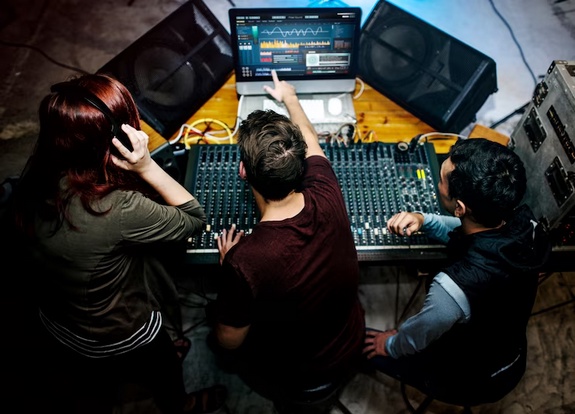Introduction
In the ever-evolving landscape of technology, the synchronicity between audio and video has played a pivotal role in shaping our digital experiences. This essay explores the historical evolution of audio-video technologies, highlighting key milestones, innovative breakthroughs, and the transformative impact on user engagement.
The Birth of Audio-Video Integration
The journey of audio and video integration began with the advent of motion pictures in the late 19th century. Initially, silent films relied solely on visual storytelling. However, the realization that combining synchronized sound with moving images could create a more immersive experience marked a significant turning point.
The Introduction of Sound in Cinema
The late 1920s witnessed the introduction of synchronized sound in cinema, marking the end of the silent film era. This innovation, known as "talkies," revolutionized the film industry and paved the way for a more dynamic and engaging audio-visual experience. The integration of sound added a new dimension to storytelling, enabling filmmakers to evoke emotions and enhance narrative depth.
The Rise of Television and Stereo Sound
As television emerged in the mid-20th century, audio-visual experiences expanded into living rooms worldwide. The introduction of stereo sound further enriched the viewing experience, creating a more immersive soundscape. This evolution not only enhanced entertainment but also influenced the advertising industry, as marketers recognized the power of combining compelling visuals with high-quality audio.
Digital Revolution: CD, DVD, and Beyond
The late 20th century witnessed a digital revolution that profoundly impacted audio and video technologies. The introduction of the Compact Disc (CD) marked a shift from analog to digital audio, offering clearer sound quality and durability. This transition laid the groundwork for future innovations, including the Digital Versatile Disc (DVD), which revolutionized home entertainment by combining high-quality video and multi-channel audio.
Internet Age: Streaming and Multi-Sensory Experiences
The 21st century ushered in the era of digital streaming, transforming the way we consume audio and video content. Streaming platforms offered instant access to a vast library of content, eliminating the need for physical media. This shift not only democratized content distribution but also led to the development of high-definition video streaming and surround sound technologies, providing users with cinema-like experiences in the comfort of their homes.
Virtual and Augmented Reality: Redefining Immersion
In recent years, virtual reality (VR) and augmented reality (AR) technologies have taken the concept of audio-visual integration to new heights. VR immerses users in a virtual environment where audio and video combine to create a sensory-rich experience. AR overlays digital information onto the real world, syncing visual and auditory elements seamlessly. These technologies have applications beyond entertainment, extending into fields such as education, healthcare, and training.
Challenges in Syncing Senses
Despite the remarkable progress in audio-video technologies, challenges persist in achieving seamless synchronization. Compatibility issues between devices, varying standards across platforms, and the need for constant adaptation to emerging technologies pose ongoing challenges. Striking a balance between innovation and user-friendly interfaces remains a delicate task, requiring continuous efforts to enhance the overall user experience.
Future Prospects: Beyond Boundaries
Looking ahead, the evolution of audio-video technologies shows no signs of slowing down. The integration of artificial intelligence, 5G connectivity, and advancements in spatial audio technologies promise to redefine our sensory experiences. As the boundaries between physical and digital worlds blur, the future holds the potential for even more immersive and personalized audio-visual interactions.
Conclusion
In conclusion, the evolution of audio-video technologies has been a fascinating journey, from the silent films of the past to the immersive virtual worlds of today. The synchronization of senses has continually shaped and enriched our digital experiences, offering new dimensions to storytelling, entertainment, and communication.
As technology continues to advance, the seamless integration of audio and video remains a driving force behind innovation. The ongoing pursuit of syncing senses has not only transformed the entertainment industry but has also permeated various aspects of our daily lives. In navigating this evolutionary path, the key lies in overcoming challenges, embracing emerging technologies, and staying attuned to the ever-changing demands of users. The future promises an exciting continuation of the audio-video journey, where the boundaries between the real and the digital are destined to blur even further.


No comments yet